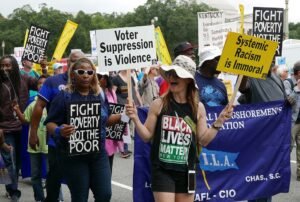August 4, 2015; NPR
The end of summer signals more than the end of bathing suit and suntan season. For more and more Americans, it signals the return to age-segregated living. College students return to universities, working adults return from summer vacations to environments where they only interact with their peers, and children return to schools where they are separated by grades. Additionally, many senior citizens are living in exclusive gated communities.
Age segregation is becoming more and more of a reality. In one study measuring a six-month period, only a quarter of Americans over the age of 60 reported discussing “important matters” with people younger than 36—and if relatives were excluded, the number dropped to six percent.
A growing number of nonprofits are bucking this trend by building intergenerational communities. These communities focus on the needs and strengths of seniors and young families, encouraging them to depend on each other to succeed.
Several years ago, Whitney Gossett went from being a family of one to being a mother of four. She adopted four siblings in foster care, ensuring they were not separated from one another. Now the children are ages 7 to 13, and they are getting ready to welcome Gossett’s fiancé.
Not surprisingly, families like the Gossetts need a lot of support. The Gossetts found it in the Hope Meadows community. Located in Rantoul, Illinois, about two hours south of Chicago, Hope Meadows consists of roughly 40 rental homes where ten families like the Gossetts live among seniors. The seniors receive a break in their rent for volunteering six hours a week helping their neighbor families, but many do much more.
Sign up for our free newsletters
Subscribe to NPQ's newsletters to have our top stories delivered directly to your inbox.
By signing up, you agree to our privacy policy and terms of use, and to receive messages from NPQ and our partners.
The founder, Brenda Krause Eheart, a former University of Illinois professor, created the community 21 years ago to support the foster children. The seniors were merely an afterthought. Looking back, she realizes the idea would have “collapsed” without the seniors. She is “convinced that we have to do so much more to utilize the time and talents of older adults to address these social problems.”
This community was the model Sister Claire LeBoeuf used to build New Life Village. Sister Claire understands firsthand the insecurities foster children face. At the age of 13, she faced the sudden death of her mother and subsequently moved in with her godmother. Although Sister Claire was loved and cared for by her godmother, she did not feel like she belonged. This feeling continued until she entered the Congregation of the Sisters of the Holy Cross four years later.
That sense of not belonging is the same feeling foster children face, and Sister Claire has dedicated her life to creating permanent homes for them. She created New Life Village for older foster children, who have the least likelihood of being adopted. When families move to New Life, they adopt older foster children. They live among other foster families as well as with seniors serving as extended family.
Although these intergenerational communities were revolutionary two decades ago, today they serve as models for others in Oregon and Massachusetts. A half-dozen more are on the way, including one community modifying the idea to support adults with developmental disabilities and another for veterans with traumatic brain injuries.
In Northwest, Washington, D.C., a nonprofit called Genesis is putting the concept to use to build a community to support young women aging out of the foster care system with young children of their own. Both the twenty-one-year-old moms and the seniors will volunteer a minimum of 100 hours every three months to help each other. For example, the young moms will drive the seniors to doctor’s appointments and the seniors will look after the children while the moms are working or in school. The founder describes the community as offering “meaningful purpose” for the seniors as well as assisting the young families, thereby severing the pipeline of poor children into the foster care system.
Overall, families in these intergenerational communities resemble extended families of our past demonstrating that as much as our world has changed the needs of children and their families are remarkably consistent.—Gayle Nelson













